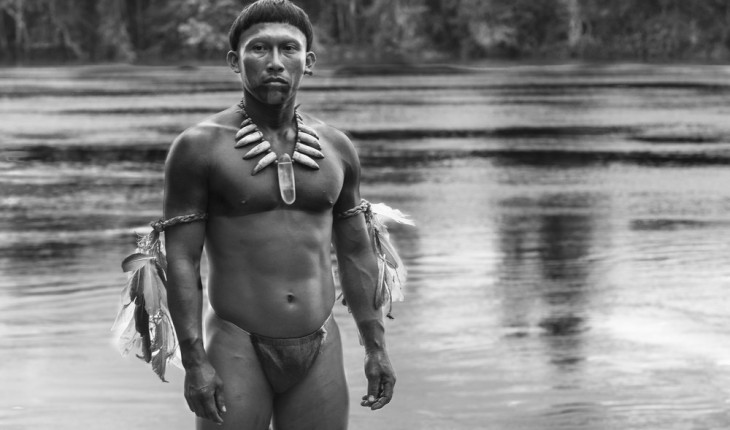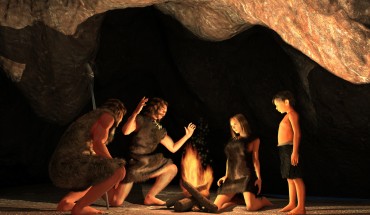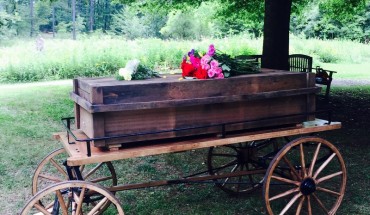By Camilo Salas
At the beginning of the 20th century, the ethnologist Theodor Koch-Grünberg arrived in the Amazon intending to study its indigenous people. A few dozen years later, the North American biologist Richard Evan Schultes appeared in the jungle to study plants used by the same indigenous population. These two true stories are the point of departure for Embrace of the Serpent, a film by the 34-year-old Colombian director Ciro Guerra. Using these two scientists as a framework, Guerra fictionalizes the history of a forgotten indigenous community, including how the last member of the tribe embarked on important journeys, first in his youth with Koch-Grünberg and later when much older with Schultes.
The film, which won the biggest prize at Cannes Directors’ Fortnight and has left American critics breathless with praise, relays the same magnificent spirit of the jungle as in Werner Herzog‘s classic Fitzcarraldo, but this time tells its story from the indigenous perspective. It’s a film that’s constantly on the move through this vast, sacred jungle—a sort of psychedelic road trip by canoe—that deals with the history of colonial oppression, religion, and madness. What makes Guerra’s film so moving and unique is how well it captures the immensity of the jungle and the incredible lives of the people who have existed there for centuries.
I spoke with Guerra over Skype as the director was preparing to travel from Colombia to Sundance to present Embrace of the Serpent before it opens at select theaters in the United States.
VICE: How did you discover the history of these two scientists?
Ciro Guerra: I was always curious about the Amazon. Making a film there was something I’d always wanted to do. But we know very little about the Amazon—at least Colombians know very little about it—so I began to investigate. A knowledgeable friend told me that a good starting point would be to read the diaries of the explorers who first entered the Colombian Amazon 100 years ago. It wasn’t all that long ago because this area had been completely underexplored. I encountered an incredible story that hadn’t been told. My first approach was through these explorers because they were men who had left everything behind—their lives, families, houses, countries—to penetrate the unknown for two, three, or even 19 years in the case of Schultes. I identified so much with this. It seemed similar to what happens when you make a film: You set off down a dark road and don’t know where it will take you or how long it will be before you see the light.
What was the investigative process regarding native customs, characters, locations? Was it all based on these diaries?
It was based on the explorers’ diaries at first, but later when I went to the Amazon, it was completely unlike what they’d documented. We don’t have a collective memory for this time as a society. It’s a lost epoch. The idea was to return to it, to bring it back even though it no longer exists. It would exist again in film.
So I started to follow their tracks and try to hear their echoes. Later I began to work with the indigenous communities. I approached them and spoke with them about what we wanted to do. Working with them, I realized we’d make something special and unique. We would circle around the history and not tell it from the same perspective it’s always told from—that of the adventurer, the traveler—but instead tell it from the indigenous point of view. We’d make them the protagonists. This is the part of the story that hasn’t been told. Switching the perspective and putting the audience in those shoes really interested me. It’s truly a film that hasn’t been seen. But achieving this indigenous perspective, this way of seeing the world, was difficult. It took time. It’s hard to change your thinking like this.
Watch the exclusive premiere of the official US trailer
At first I was worried about being faithful to historical and scientific fact, but later I realized it was more important to let it go and immerse myself in imagination, in dream. I started to lose my western logic and tried to embrace another logic. I wanted the film to feel like an indigenous story, like an Amazonian myth. But Amazonian myth is, for us, almost incomprehensible. Its narrative logic absolutely opposes ours.
Another protagonist, beside the natives and the scientists, is the jungle, like a giant living entity that communicates, that says things.
This is a bit like the perspective they have of the jungle. We did a very particular thing. We wrote the jungle like a female character, in part because there wasn’t a female character in the film. In the actual history there wasn’t a way to put a female character in, but then I started to understand that the jungle has this connotation for them. I started to do something I’ve always wanted to do: create a character out of the environment. We made it feminine because they see it this way. This is incomprehensible in our narrative tradition but makes all the sense in the world in terms of Amazonian myth.
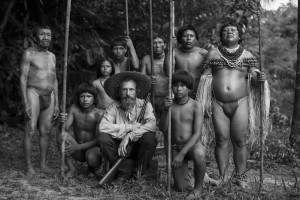
Is there fantasy in the film? The last member of the tribe, the search for the flower, is this based in reality?
It’s based on a real thing, but it’s modified for various reasons. For me to give the native group a real name, the film would have to be an extensive anthropological investigation. I didn’t have the right to do that, but fiction gave me permission. The indigenous people don’t feel comfortable if we speak of real plants, real myths, real songs because they’re sacred. With fiction, however, you can modify these things. We wanted to arrive at the most profound truth, not the superficial truth of anthropological data.
The part of the film involving the messiah is shocking. What’s the story there?
When we showed the film to the indigenous communities, we showed it in different places in the Amazon and various people were grateful we’d dealt with the evangelical monks. It’s a taboo theme there. Everything that happened one must leave in the past, but this is something they remember and that’s been part of their lives.
Later in the diaries there appears the story of a mestizo named Niceto. He arrived at the border of Colombia and Brazil, in Yavarate, at the end of the 19th century, and proclaimed that he was the messiah. He had as many as 2,000 followers and did crazy things, demented things, much more so than what’s in the film. His group became unstable and the Brazilian army in the end had to remove them by force. It was out of control. Twenty years later, someone else named Venancio also proclaimed he was the messiah and had hundreds of followers. It all ended in a massive suicide. It’s a phenomenon that keeps repeating itself up until today. Even now, on the border of Colombia and Ecuador, there are these Amazonian Israelites. It’s a phenomenon related to the fact that the Amazon is a spiritual place. When spirituality is removed by force, it creates a vacuum in which fundamentalism and madness grows.
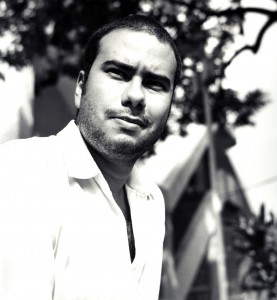
Director Ciro Guerra
The use of language is particular in this film. The messiah speaks a type of Portuguese, he speaks Spanish, German is heard, there are local dialects. How did you decide to make a multilingual film instead of using just one language?
It has to do with the region. In the area where we filmed they speak 17 different indigenous languages. You meet indigenous people who speak 108 indigenous languages without a problem—and they’re not languages that resemble one another. You have to recognize that the whole world has come to the Amazon. Everyone comes looking for wealth or resources or expanded consciousness. It’s a story that’s been told by the Germans, French, Austrians, Americans, besides the Portuguese and Spanish. The Amazon is a tower of Babel. We wanted to reflect this.
The two indigenous protagonists are from the Amazon?
Yes, they’re from the region. We found them where we were filming. It was difficult to find virgin forest because really it’s not easy to find jungle unaffected by agriculture, livestock, commerce, tourism. Once we found it, we started walking through the region, passing through communities and inviting everyone to join us. They were very enthusiastic. Everyone wanted to participate. They were very considerate. They didn’t ask what we wanted to do. They only asked that we be transparent and not have hidden motives. The people participated without doubt.
Once we found those indigenous actors, we had a space of three months to teach them about acting and movies. Although many of them hadn’t had contact with this—not with theatre, movies, or anything like that—they had a strong oral tradition that’s persisted for thousands of years, they’ve maintained it generation after generation, and this gave them the capacity to listen. They really know how to listen, which is hard to find in an actor.
Was the filming process difficult?
We were prepared for the worst. We’d heard stories of shootings that became nightmares. What we did was get close to the community and ask for their help and collaboration. We invited them to participate in front of and behind the cameras. They taught me how to work with the environment, with the jungle, to ask it permission. They performed rituals for spiritual protection. They explained to the jungle what we wanted to do. This meant that the shooting came off very well. We didn’t have illnesses or accidents. The climate supported us. If it started to rain when we paused for lunch, it stopped later on when we returned to work. The shooting was demanding for everyone but also a profoundly spiritual, humbling adventure.
How long did it last?
The pre-production process and shooting took three months and involved more or less 40 people from outside the Amazon and some 60 people from indigenous communities.
What happened with the rubber industry in the region? It’s something that’s in the film, the savagery of it.
The rubber industry is responsible for the largest genocide in Colombia. The last novel by Mario Vargas Llosa, The Dream of the Celt, is the story of an Irishman who denounced the rubber industry for its role in the brutal and savage extermination of hundreds of thousands of indigenous. Beyond the disappearance of much of their knowledge, many communities disappeared completely. Hundreds of thousands of people were enslaved and exploited in the worst way to make rubber the great industry it was. For a hundred years it was like petroleum. Manaos in Brazil was like Dubai, the richest city in the world at the time. Everything came at the cost of savage exploitation that was later denounced.
For the film, this wasn’t something that interested me at first. If it was going to transform into a film about genocide, it wasn’t what I had wanted to make. I was more interested in making a film about consciousness.
That scene in which many actors are dismembered is pretty powerful.
We try to synthesize all the pain in that scene. The truth was much more terrible. If that scene comes close to it, the truth was infinitely worse.
How did you decide to film in black and white?
The explorers’ photographs were the principal influence, images in black and white, plate photography, almost daguerreotypes that they took. What you see is an Amazon that’s completely different from the one now. You can see all the exoticism, all the exuberance. It feels like another world, another time. Being there I realized it wasn’t possible to reproduce with any fidelity the color of the Amazon. There’s no filter or camera or oil that lets you reproduce its significance. I felt that to do it in black and white, to get rid of colors, would activate the audience’s imagination. Viewers would add the colors in their mind and these imagined colors would be more real than whatever we could reproduce. This imagined Amazon is more real than the actual Amazon.
Translated from the Spanish by Lee Klein.Follow Camilo on Twitter.
Embrace of the Serpent will be released by Oscilloscope Laboratories at Film Forum and Lincoln Plaza Cinema in New York on Wednesday, February 17, 2016 , and at Landmark Nuart in Los Angeles on Friday, February 19, 2016, with a national rollout to follow.
